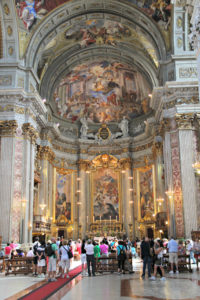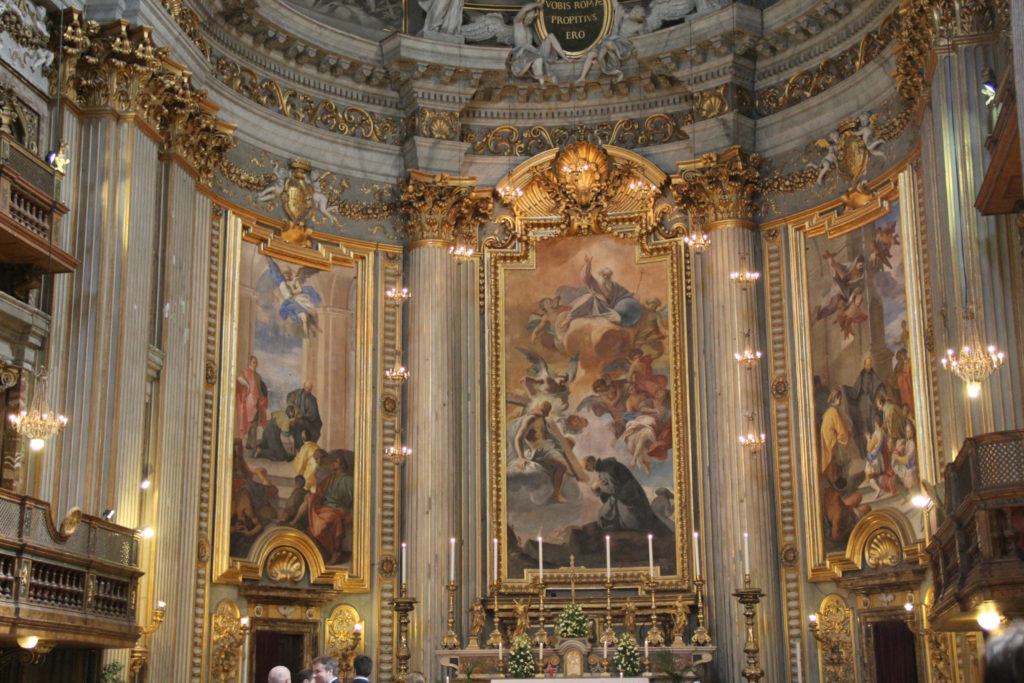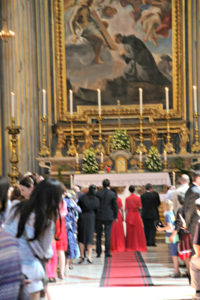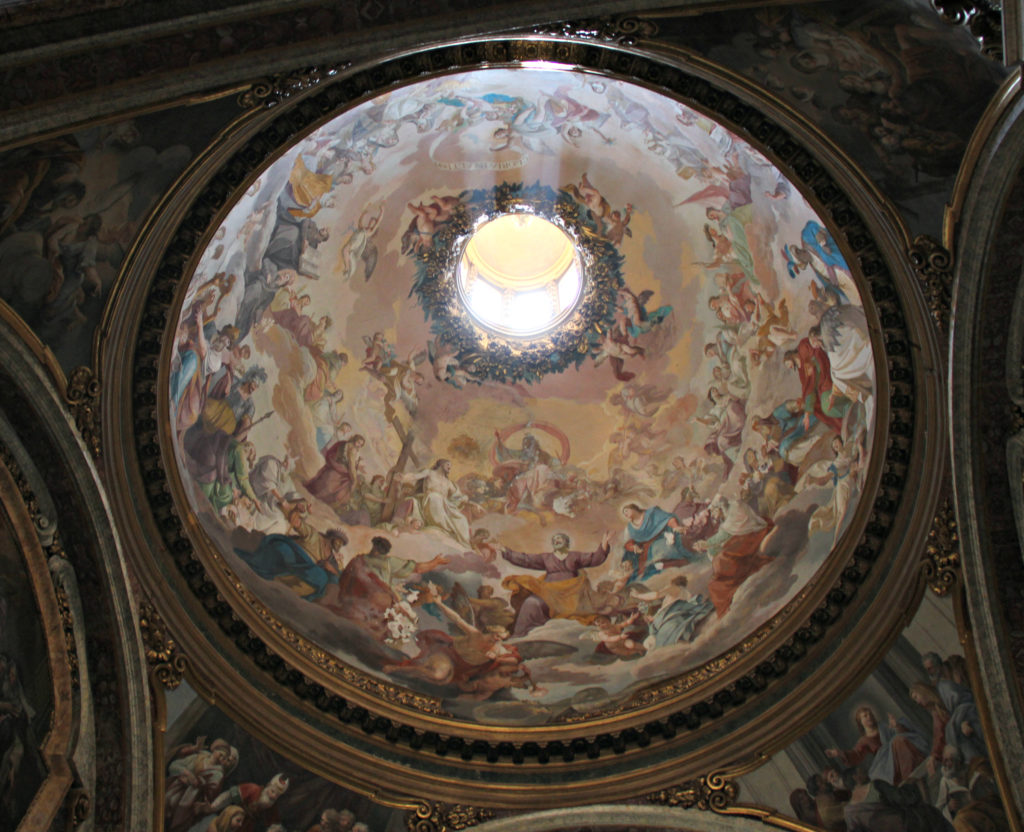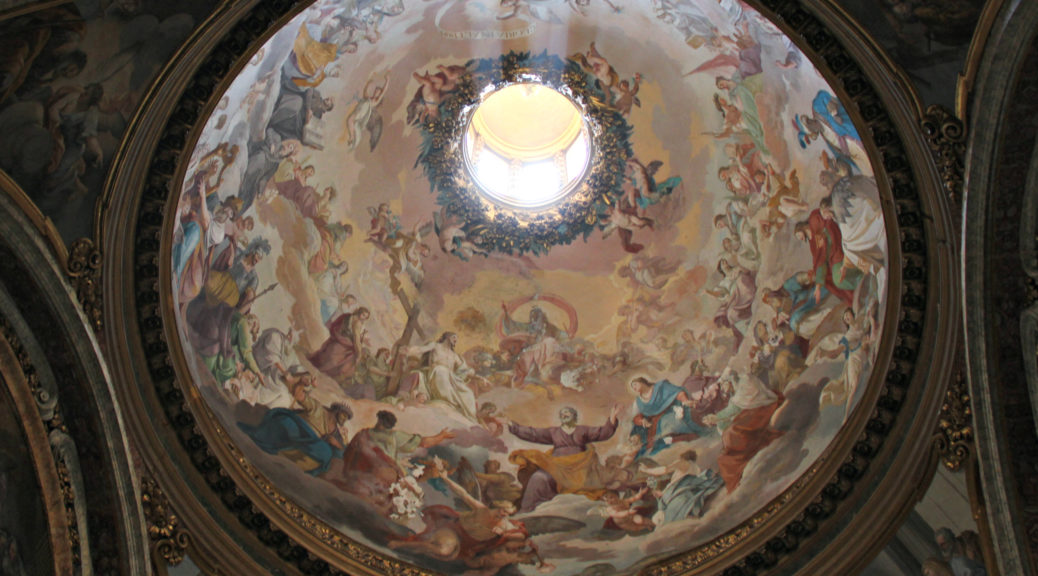
Rome (Part One)
Rome’s history spans three centuries and its history comes alive everywhere through ruins, monuments and cathedrals. The first picture below is the Castel Sant’ Angelo. It has been used as a mausoleum, fortress, castle and is now a museum. Tradition says that Archangel Michael appeared on the mausoleum, which led to its current name (translation is Castle of the Holy Angel). A statue of the archangel is at the very top.
The next picture is the Supreme Court of Cassation. It functions very much like the Supreme Court in the United States. It was built in the late 1800’s to early 1900’s.
The last picture in this section is of the Piazza Venezia. Several streets converge here and it is considered a central hub in Rome. It is near the Victor Emmanuel Monument. The main street leads to the Colosseum and Roman Forum.
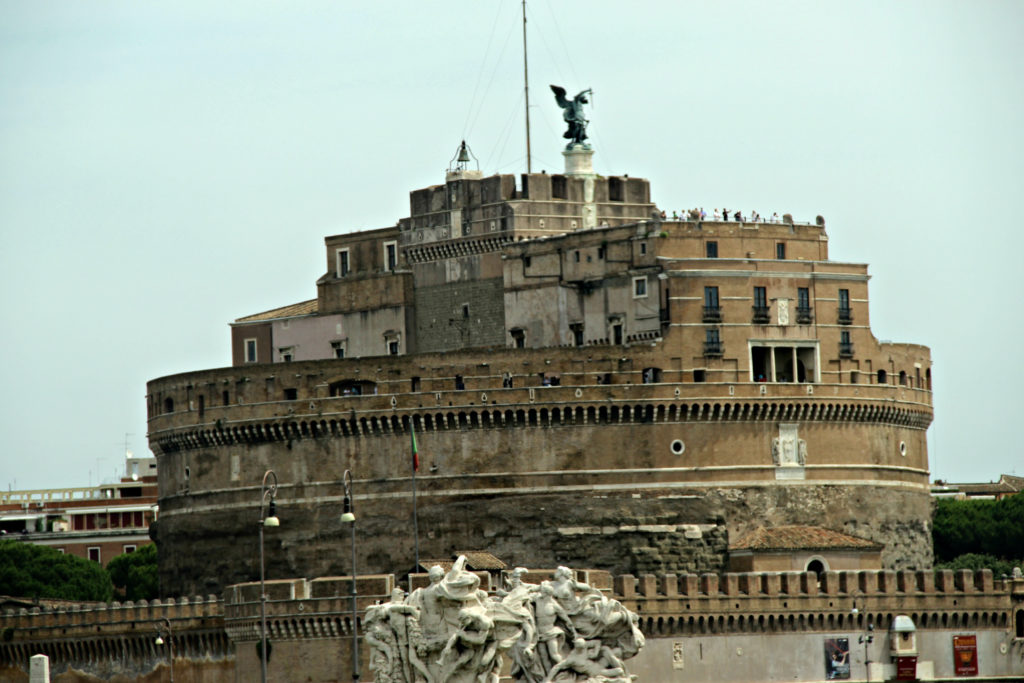
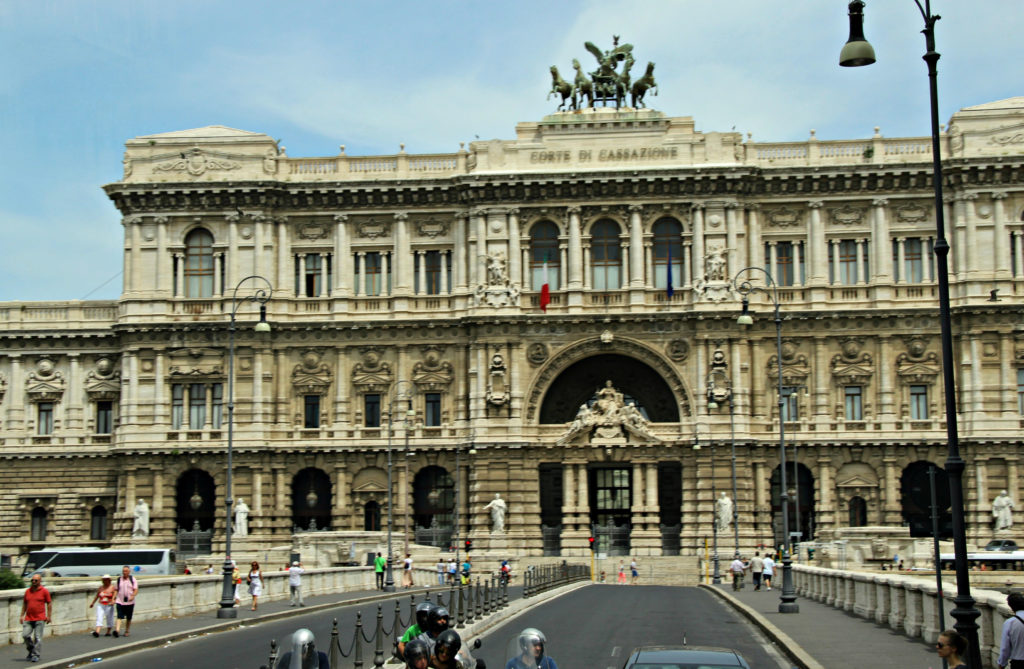

During some of our free time, we visited the Victor Emmanuel Monument, also known as the Altare della Patria (Altar of the Fatherland). Victor Emmanuel was the first king of united Italy. Construction began in the late 1800’s and was completed in 1925. It is made of white marble and features columns, fountains and an equestrian sculpture of Victor Emmanuel. The monument also holds the Tomb of the Unknown Soldier.




Nearby is the Trajan’s Column which commemorates Roman Emperor Trajan’s victory in the Dacian Wars. It was completed in 113 AD and is famous for its spiral depiction of the battles in these wars. It is almost 100 feet tall and is made of marble.
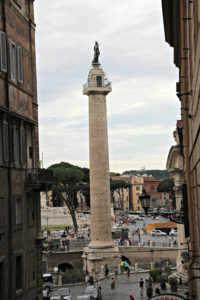
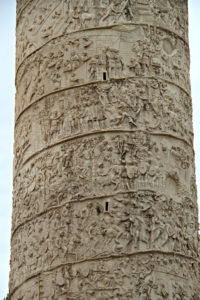
We also visited the Trevi Fountain which was completed in the 1700’s. Neptune, the god of the sea, is the central figure. There are also two tritons, one wrestling a seahorse and another with a more calm animal. These symbolize the two contrasting “moods” of the sea. Tradition says if you throw a coin into the fountain, you will return to Rome. It is a popular gathering place, particularly at night.

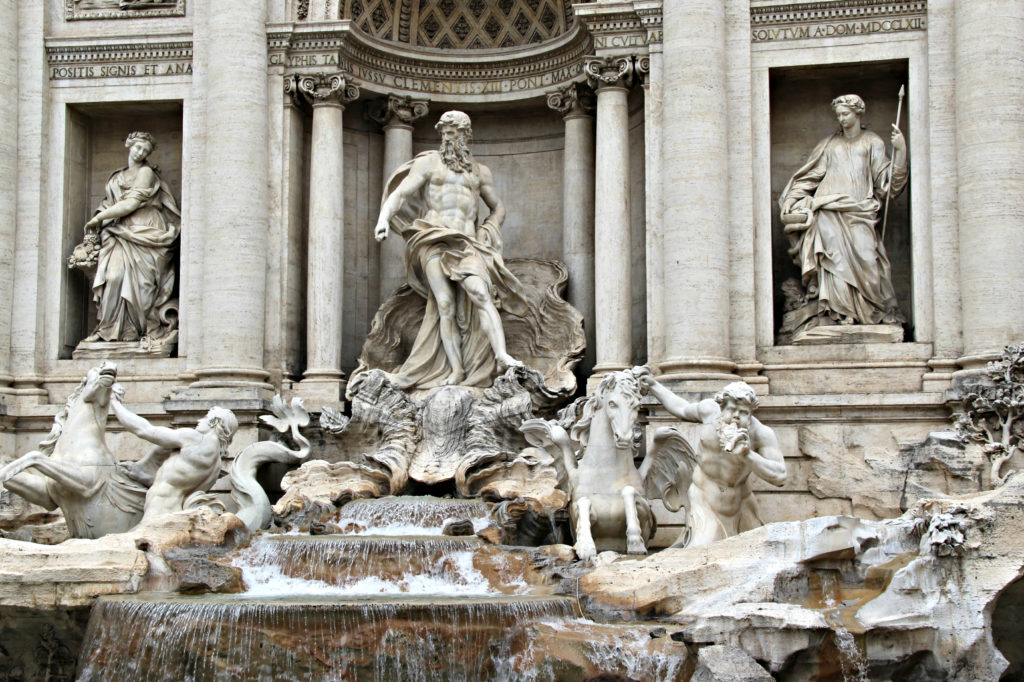

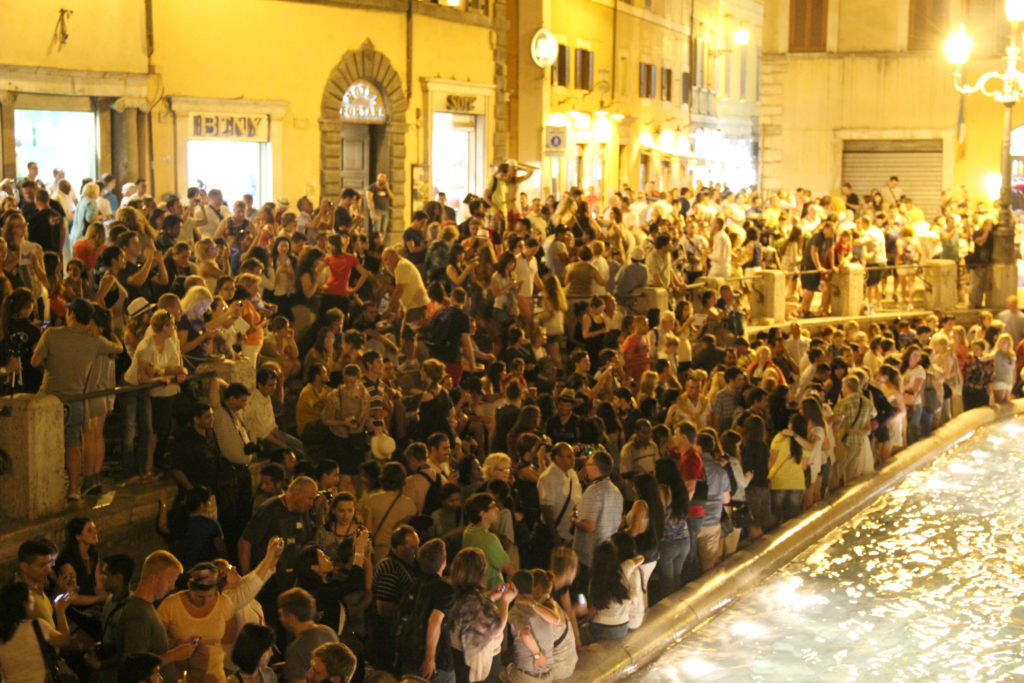
Though not part of our tour, my husband and I also took a cab to the Pantheon. The area outside of the Pantheon is the Piazza della Rotonda. The Piazza has a large fountain and obelisk. The fountain is aptly named the Fontana del Pantheon or the Fountain of the Pantheon.
The Pantheon was originally a temple for pagan gods, but was converted into a Christian church in 609 AD. Among those buried at the Pantheon is the artist, Raphael. The top, triangular piece (called a pediment), was originally decorated with bronze statues. These were removed and used to create the Baldacchino at St. Peter’s Basilica.
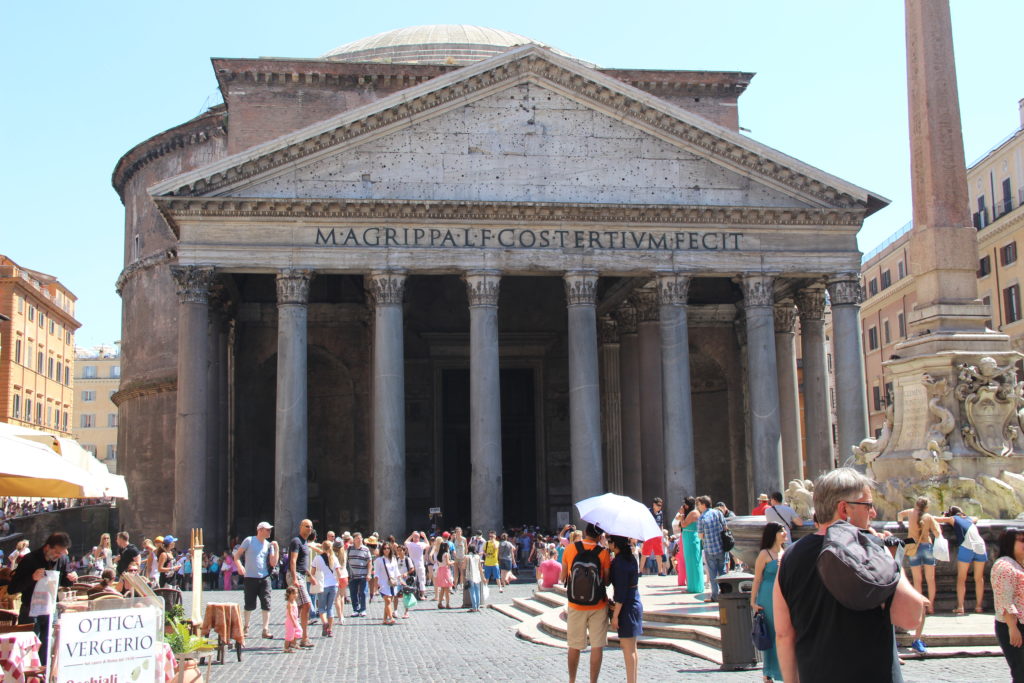
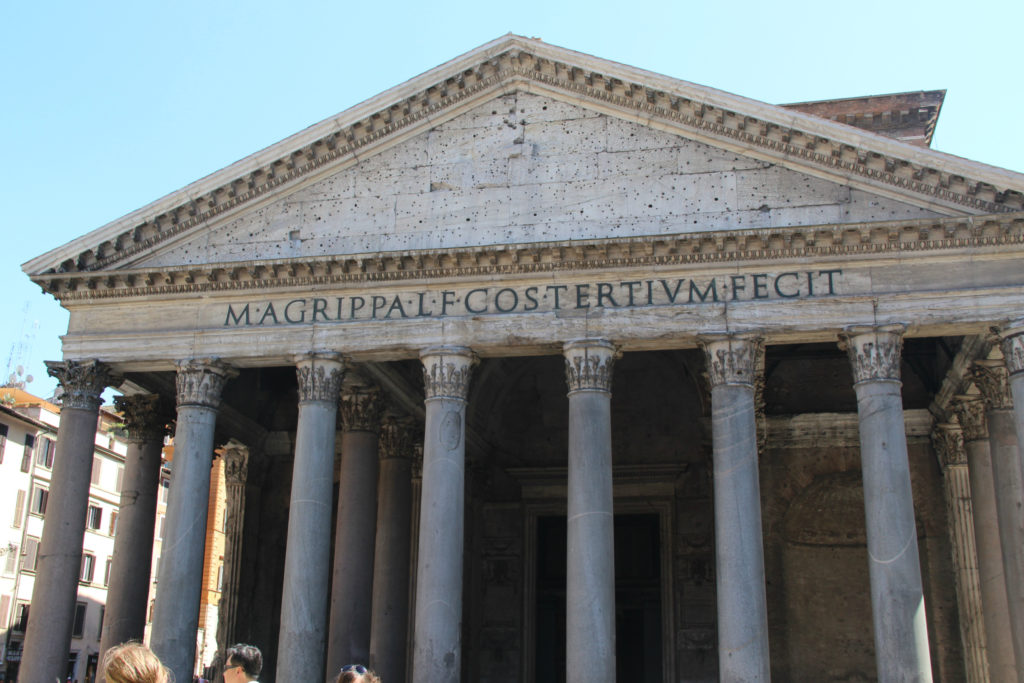

The interior of the church was simple and open. I have included a picture from Shutterstock to give you a sense of the whole. When you look at this picture, Raphael’s coffin is on the far left (beneath the red columns). Two Italian kings are also interred here, including King Victor Emmanuel (his monument is pictured previously in this posting).
To me, the most remarkable part of the Pantheon is the dome. At the very top, there is a large opening called an oculus, which provides light. There is also a picture of the high altar.
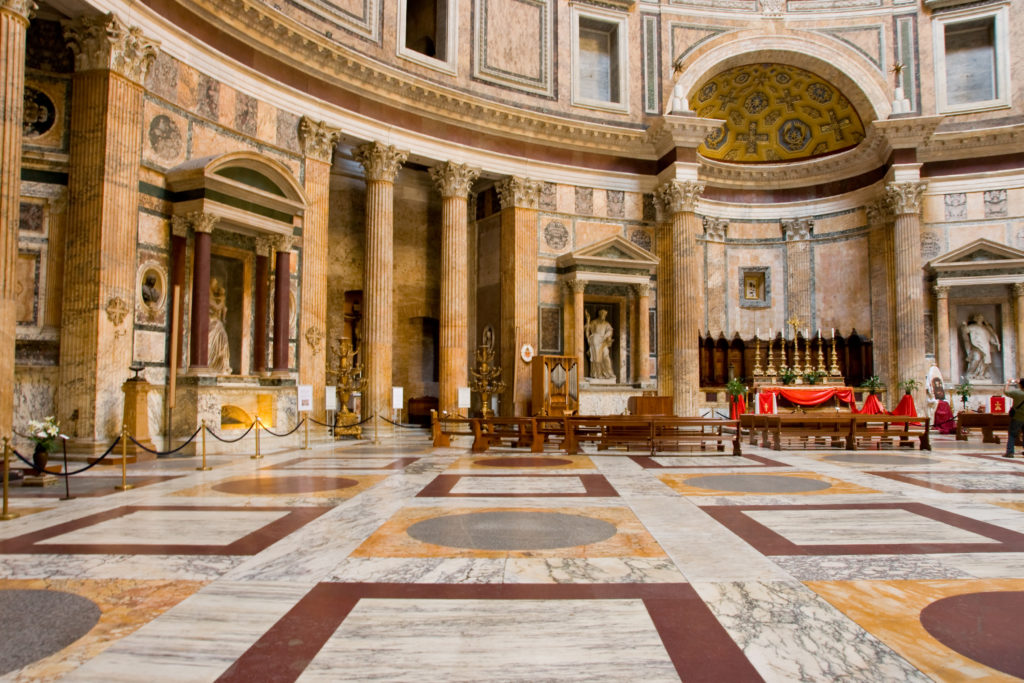
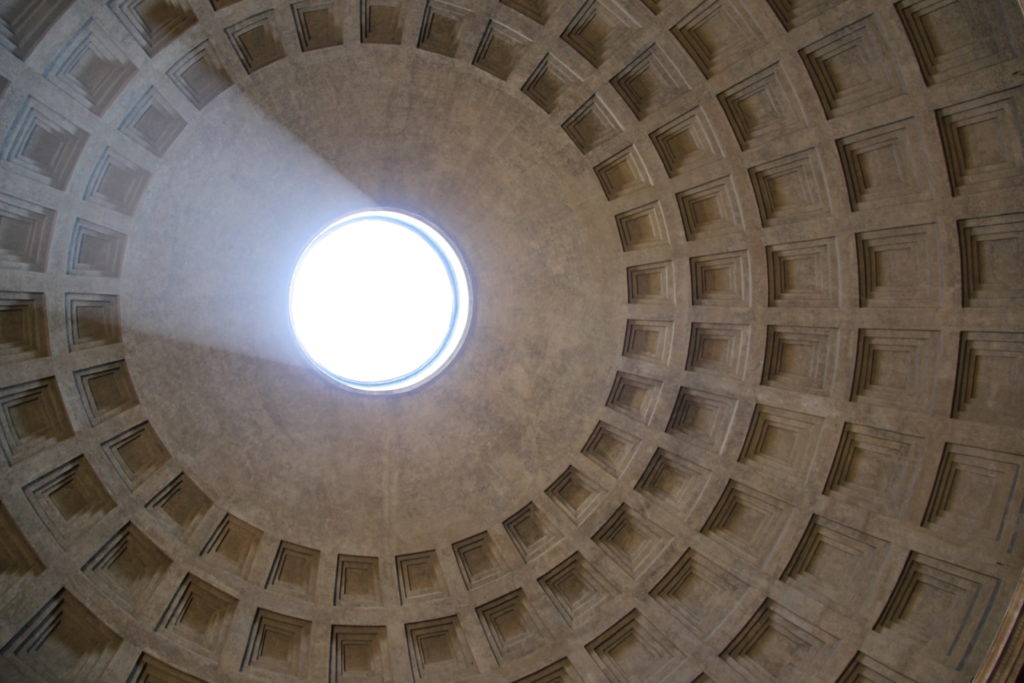
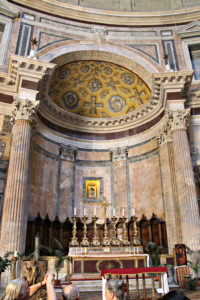
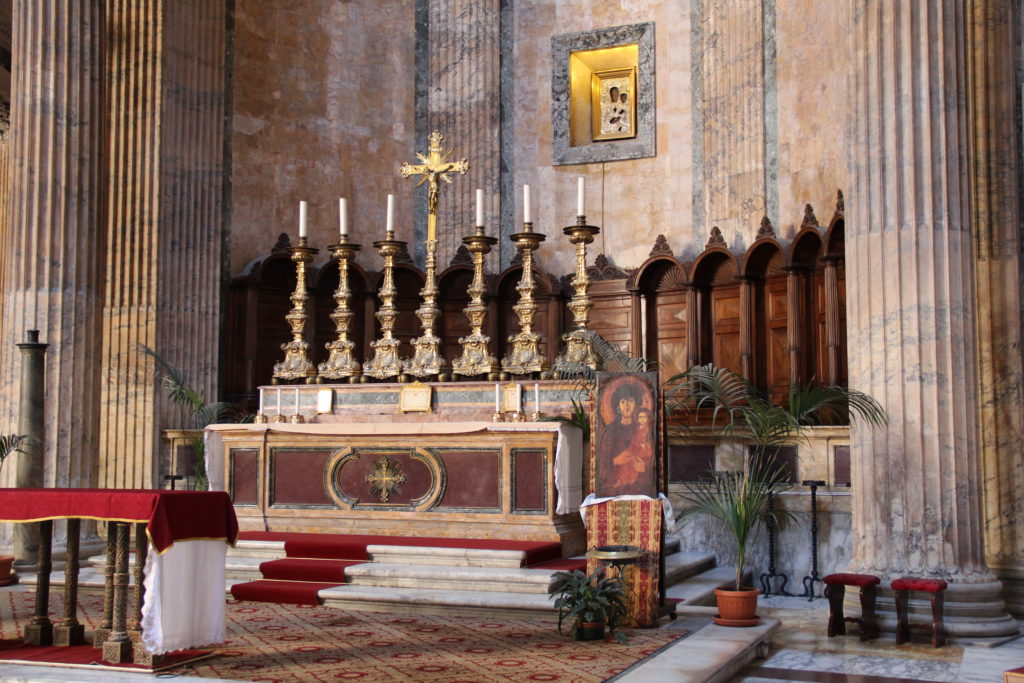
Just a block or two from the Pantheon was the Church of St. Ignatius of Loyola, a Roman Catholic Church. It is still a working church – in fact a wedding was just beginning as we visited. The church has beautiful paintings – including cupolas and an extraordinary ceiling.
